Wind past participle Archives EngDic
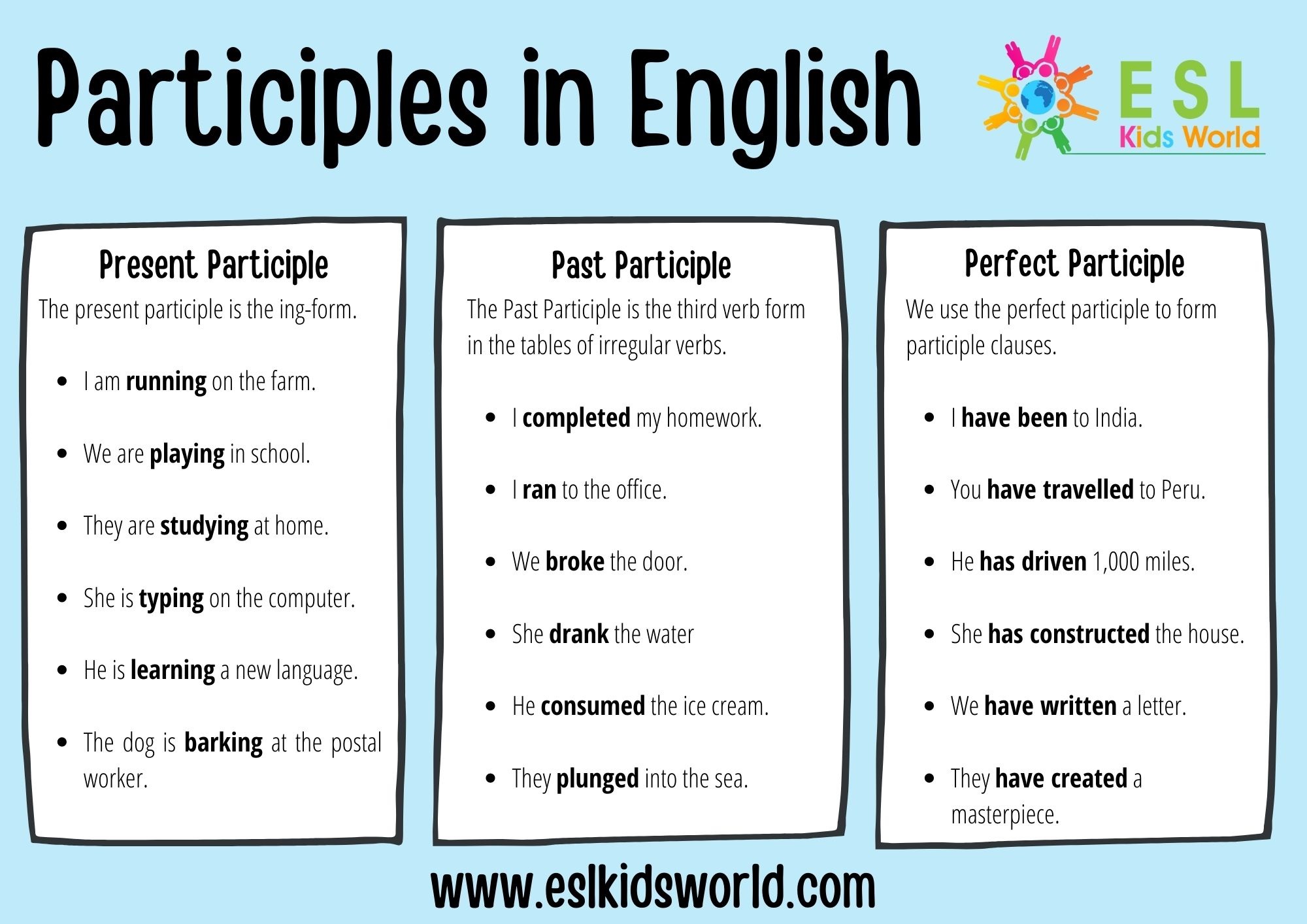
Participle Examples What is a Participle? ESL Kids World
What is the past tense of the word "wind" The past tense (past participle) form of "wind" is "winded." The infinitive of the word form is "wind." The present participle form is "winding." The past tense form is "winded" and past participle form is "winded." Understanding verb tenses The general grammar rules that govern past tenses are as follows.
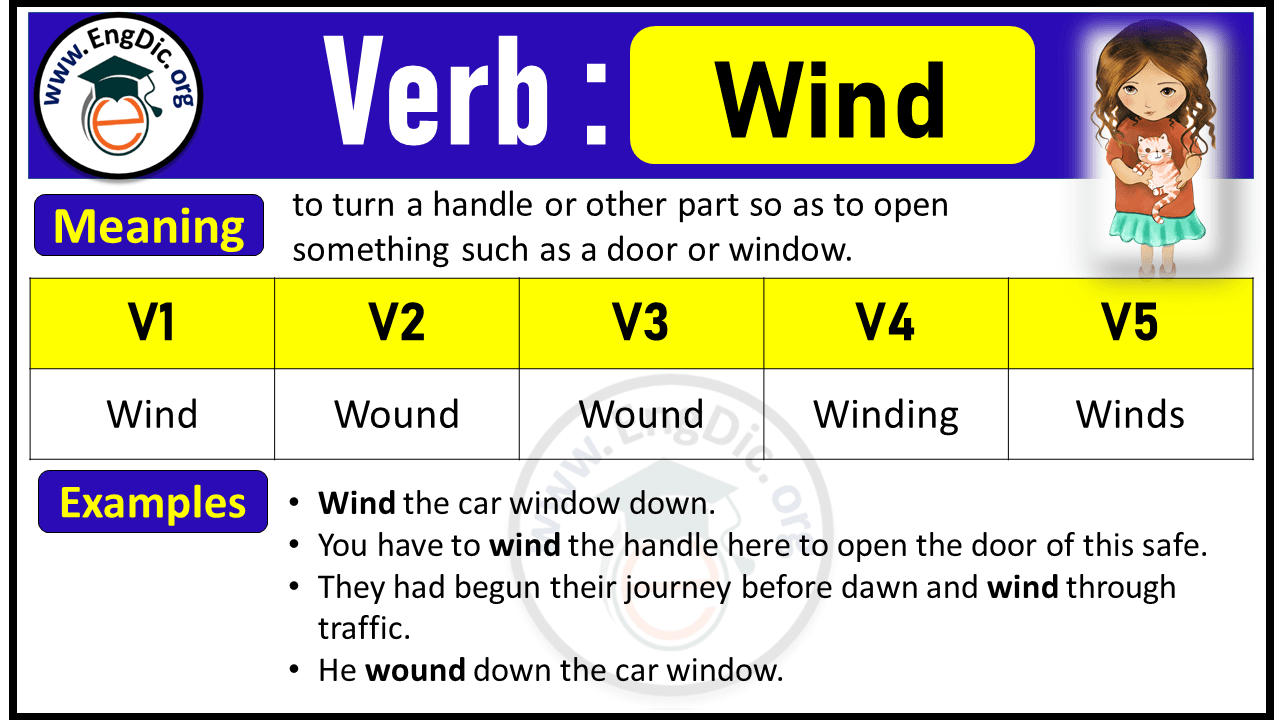
Wind past participle Archives EngDic
It's your go! Select the past participle in the following sentences. 1. Would you like a boiled egg? 2. The dried flowers will please Sarah.

WIND Past Tense, Present, Future, Participle Form V1 V2 V3 V4 V5
Verb; Wind Meaning; wrap, twine, wrap up, envelop V1, V2, V3, V4, V5 Form of Wind Synonym for Wind; flatus huffing and puffing gas puffing breeze puffing and blowing panting breath flatulence gasping for breath out of breath breathless wind instruments.

List of Past Participle Grammar Syntax
Answer The past tense of wind is winded or wound . The third-person singular simple present indicative form of wind is winds . The present participle of wind is winding . The past participle of wind is winded or wound . Find more words! wind Similar Words weaved wove woven meandered bent bended curved looped rambled turned twisted zigzagged coiled
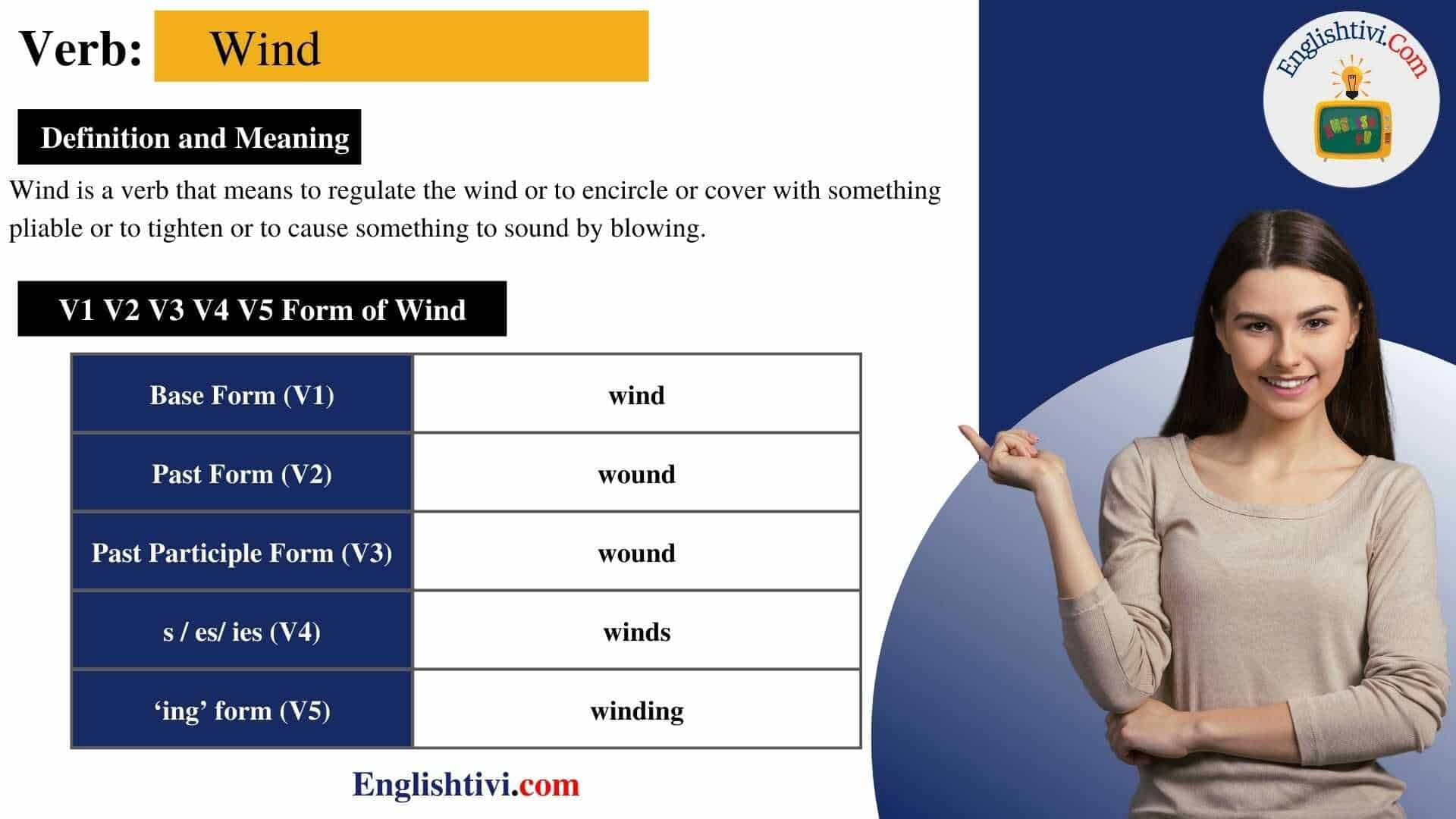
Wind V1 V2 V3 V4 V5 Base Form, Past Simple, Past Participle Form of Wind Englishtivi
'to wind' conjugation - English verbs conjugated in all tenses with the bab.la verb conjugator. bab.la - Online dictionaries, vocabulary, conjugation, grammar.. Past participle. wound. Translations for "to wind" Translations for "to wind" in our English dictionaries "to wind" Spanish translation

Wind Past Tense Verb Forms, Conjugate WIND
Wind of Past Participle V3 The V3 form is identical to the V2 form. The V3 form is "wound". wound is used in the past or present perfect tense. + In the present perfect tense, the word wind is used 'have +'wound ' or 'has +'wound.' I, you, and we are used as 'have + 'wound' subjects. He, she, and it are used as 'has +'wound' subjects.

Interwind V1 V2 V3 V4 V5 , Past Tense, Past Participle Form of Interwind EnglishAwesome
Present Perfect Continuous Tense He/She/It has been winding. I have been winding. You/We/They have been winding. Simple Past Tense He/She/It winded. I winded. You/We/They winded. Past Continuous Tense He/She/It was winding. I was winding. You/We/They were winding. Past Perfect Tense He/She/It had winded. I had winded. You/We/They had winded.

Past Tense of Wind AnnabelmcyCrosby
1 not attempted What is the base form of the verb "to wind"? A. winds B. winding C. wind 2 not attempted The present participle of "to wind" is __________ . a b c d e f

Past Tense of Wind, Past Participle of Wind, V1 V2 V3 V4 V5 Form of Wind English Study Here
The past form of 'wind' is 'wound' [/waʊnd/]. "Old-fashioned clocks have to be wound." 'Wound' [/wuːnd/] can be used as a noun and it is pronounced differently. In this case, it can refer to an injury. "His wound took some time to heal." 'Wound' [/wuːnd/] can also be used a verb and it means to injure. "They were badly wounded in the accident."
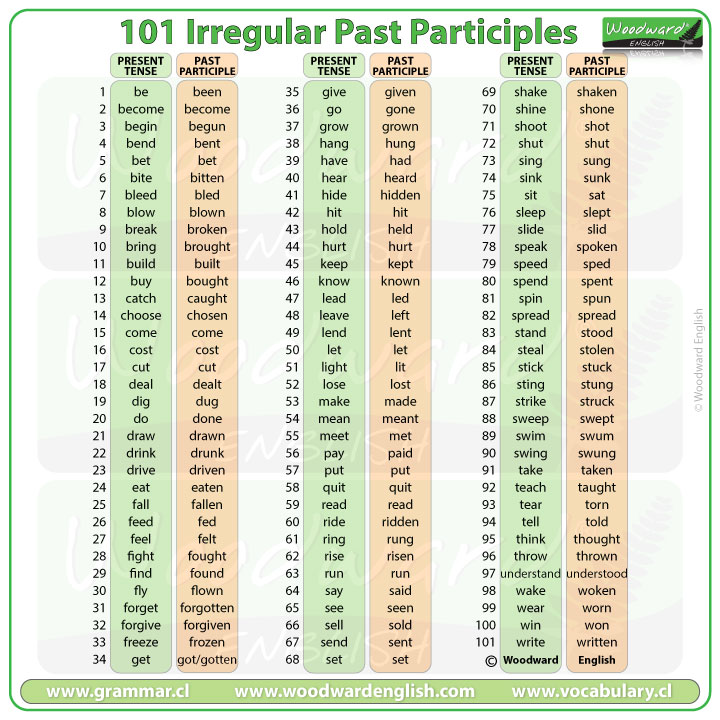
Irregular Past Participles in English Inglés Campus Virtual ORT
[waʊnd] You are look at the page for irregular verb wind Participle of the irregular verb [wind] The past participle is one of the most important parts of English grammar. It's used to express perfect tenses and to form the passive voice.

Wind Past Simple, Simple Past Tense of Wind, Past Participle, V1 V2 V3 Form Of Wind When
The past tense of "to wind" is either "wound" or "winded." We use "winded" when it means to cause someone to have difficulty breathing or notice the presence of something by its scent. "Wound" is usually used when it refers to "to twist" something. Here's a table for more details: How to Use the Past Tense of Wind

Past Tense Of Wind, Past Participle Form of Wind, Wind Wound V1 V2 V3 Lessons For English
An all-in-one writing assistant that works on your desktop and in your browser. With just a few clicks, clean up typos, grammatical mistakes, and misplaced punctuation.
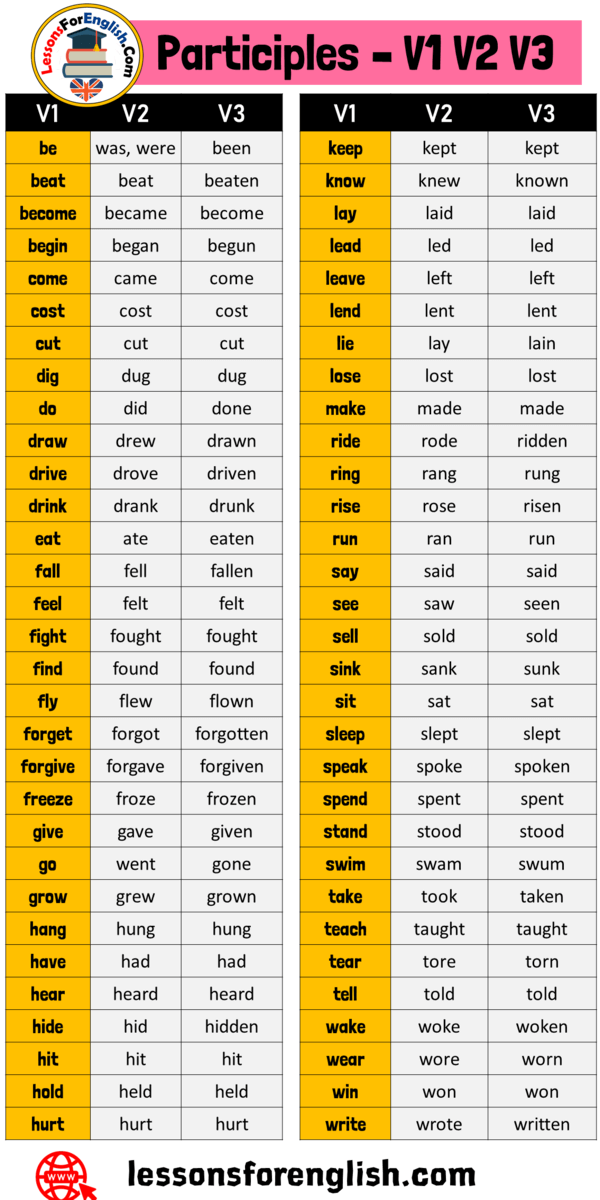
Participles, V1 V2 V3 List Lessons For English
Conjugate the English verb wind: indicative, past tense, participle, present perfect, gerund, conjugation models and irregular verbs. Translate wind in context, with examples of use and definition.
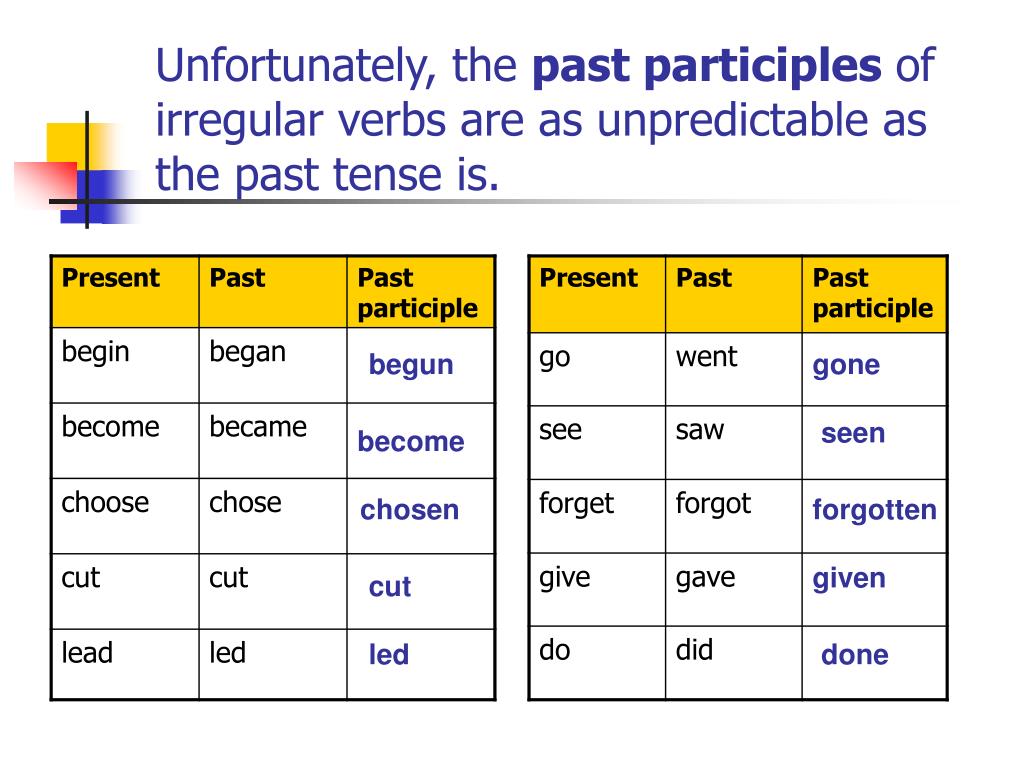
past participle tense 用法 Shophann
The past simple and the past participle of wind Conjugation of the verb wind: Base Form/Infinitive without 'to': wind Past Simple: wound Past Partciple: wound Present Partciple: winding Third Person Singular: winds Definition: 1. To turn a knob, key, or handle on a mechanical device several times to make it operate. 2.

Wind up Past Simple in English, Simple Past Tense of Wind up, Past Participle, V1 V2 V3 Form Of
As the past tense of "wind," winded and wound are used to describe an action or an event that has already happened in the past. Below are some examples of how to use them in different contexts: We use "wound" as the past tense of wind with the below meanings: To pat/gently hit/rub a baby's back to make it burp.

Past Participle Definition, Forming Rules and Useful Examples • 7ESL
Definition: To Wind Irregular verb: To Wind Verb conjugation: Wind - Wound - Wound Meaning of 'To Wind' To turn something round to make a mechanical process operate Conjugation of verb 'Wind' Irregular Verbs Following a Similar Pattern Verbs like: Subscribe to Ad-Free Browsing